My tutor suggested that I may be interested in the work of Dexter Dalwood, especially the way he used windows or rear-view mirrors in his work. Sweeping the internet, I was interested to learn that Dalwood had been a base player for the punk band the ‘Cortina’s’ prior to really developing his art on the international stage. Being a bit of a punk lover myself this instantly hooked me into his psyche.
I watched an interview available on the Tate website where in a talk about his 2010 St Ives Exhibition, Dexter Dalwood said that he was ‘always fascinated by the fact that so many artists that [he] would meet, when you saw their work, [would say] they weren’t making work about all the things that they were interested in.’ (Dalwood: 2017). Dalwood questioned this suggesting that art you make should be ‘encompassing things you read, things you see, things you think about, things you imagine, things you fantasise about.’
With this in mind here’s my action point 1:
When developing a piece of work, perhaps I could link this to my interest in novels and poetry. Either by linking phrases directly using collage techniques or like Dalwood has done in several of his paintings, reference them in a more indirect way. His painting Sunny van Bulow (2003) below not only references directly the work of the Pre-Raphaelites (basing his composition of a painting by John Everett Millais from 1852) and referencing Shakespeare’s Ophelia but he also tells a story of the New York wife of an art dealer, Sunny von Bulow who tragically died in 1980 (information from the Saatchi Gallery).
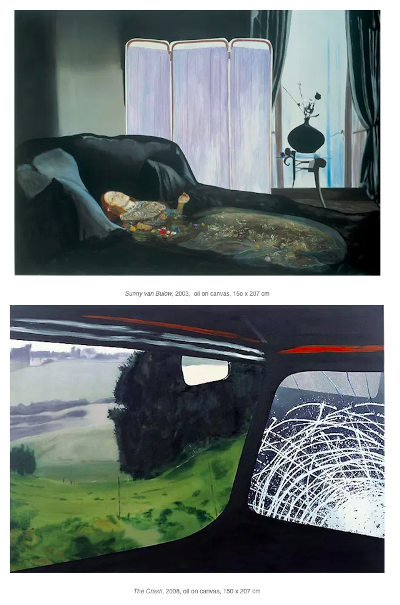
Dexter Dalwood’s The Crash intrigued me as I have been thinking about painting a figure inside a car and the view beyond the window. I understand that Dalwood rarely paints figures in his compositions, instead allowing the view to populate the space themselves. I believe that this particular artwork is a collage of a photograph with the addition of white gouache of the window screen. According to a write up on the British museum website, ‘The drawing is a preparatory collage for Dalwood’s 2008 oil painting The Crash which alludes to the fatal car accident in Suffolk of the German expatriate writer W.G. Sebald (1944-2001).’
Action point 2:
I’m not sure I like the dark subject matter but will definitely consider using a car window as a frame.
It strikes me that much of his work hangs in a blurred line somewhere between capturing historical or even political events, imaged spaces and playing with frames. He scenes resonate some sort of familiarity but at the same time he adds a twist that throws me off balance when I view his work. I do like how his works make me look closer and then look again.
Action point 3: Can I somehow incorporate a facet that is initially hidden but then is revealed to the viewer on closer inspection making them question their initial reactions to my work?
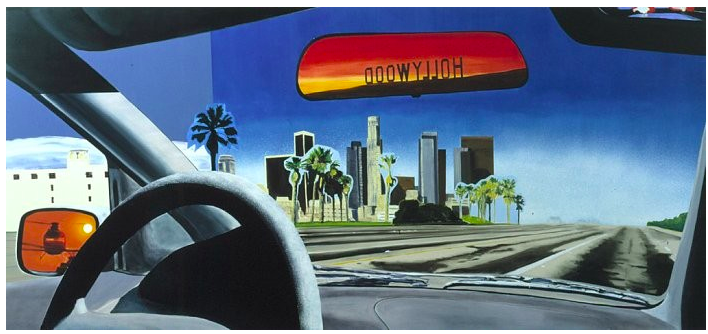
His finished oil paintings are on a grand scale often around 2 metres wide. I like the way in White Bronco (2001) above he has used the field of vision dictated by sitting in a car for the canvas parameters. His style of painting is very different to mine. I enjoy painting a much more textured canvas. I have tried to keep areas of quiet in my painting like the expanse of blue sky featured in Dalwood’s painting White Bronco but feel I have been unable to infiltrate this in my work successfully to date.
Action point 3:
Try quiet painting areas again.
Reflections are used incredibly well in his work, the mirror on the floor for example in Midday (2012) juxtaposes well with the texture Dalwood creates at the top and bottom of his canvas. And I love the use of the pool of water for reflection in Brian Jones’ swimming pool (2000).
Action point 4:
Exploit reflective surfaces where possible.
So how has taking a look at this artist developed my own practice?
Firstly, as mention I’ve used his idea about the interior of a car to frame one of the compositions in assignment 5 as seen below.
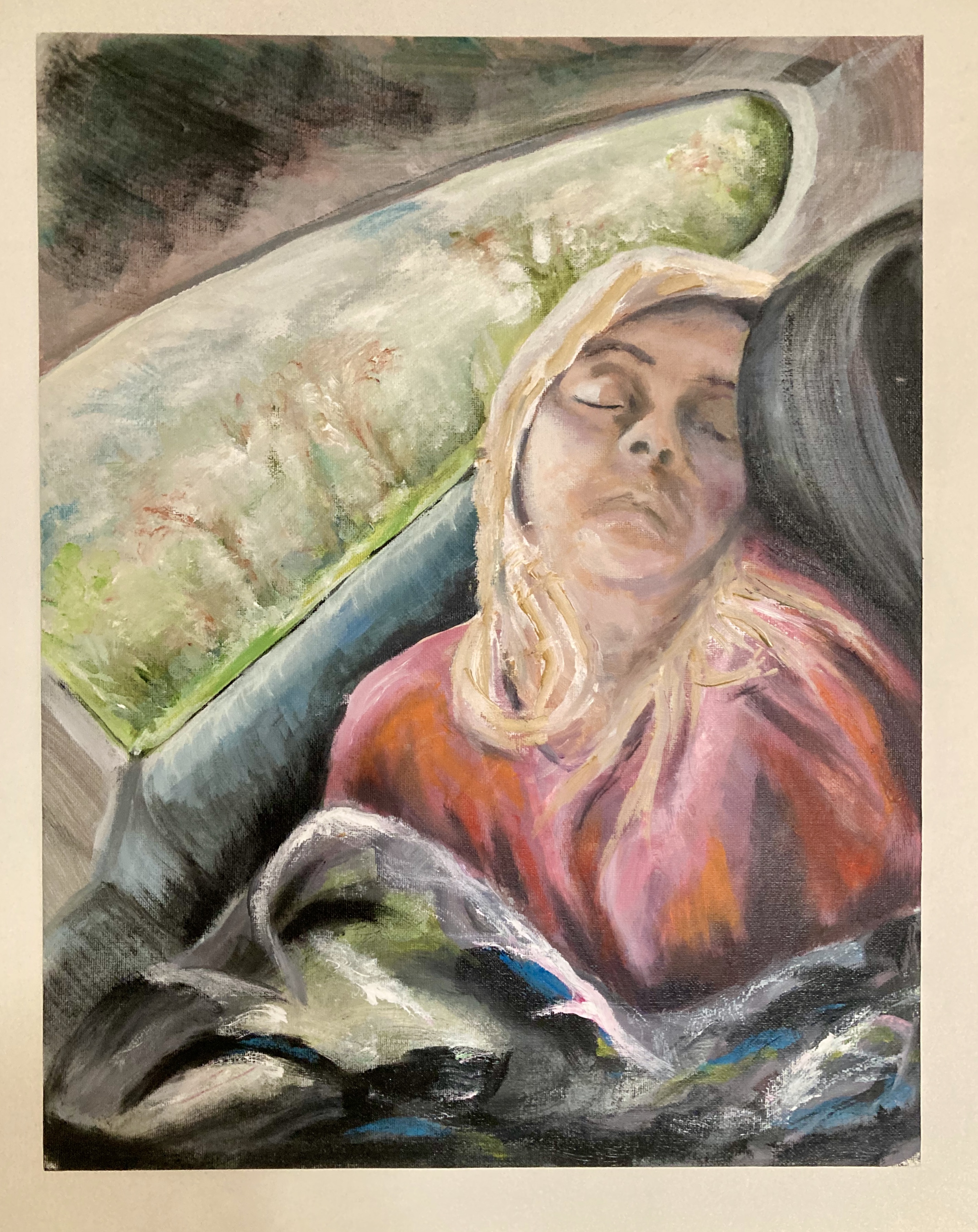
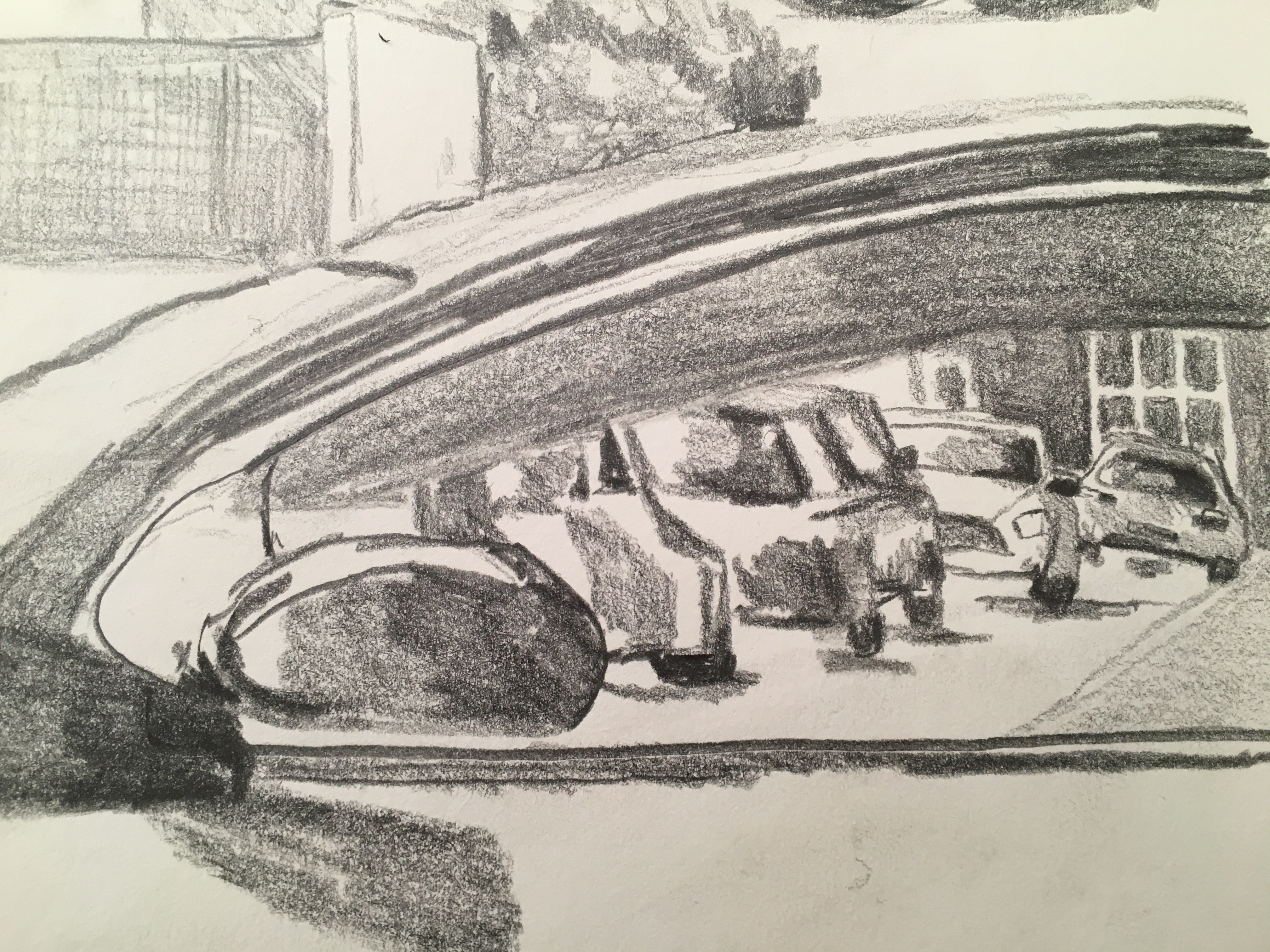
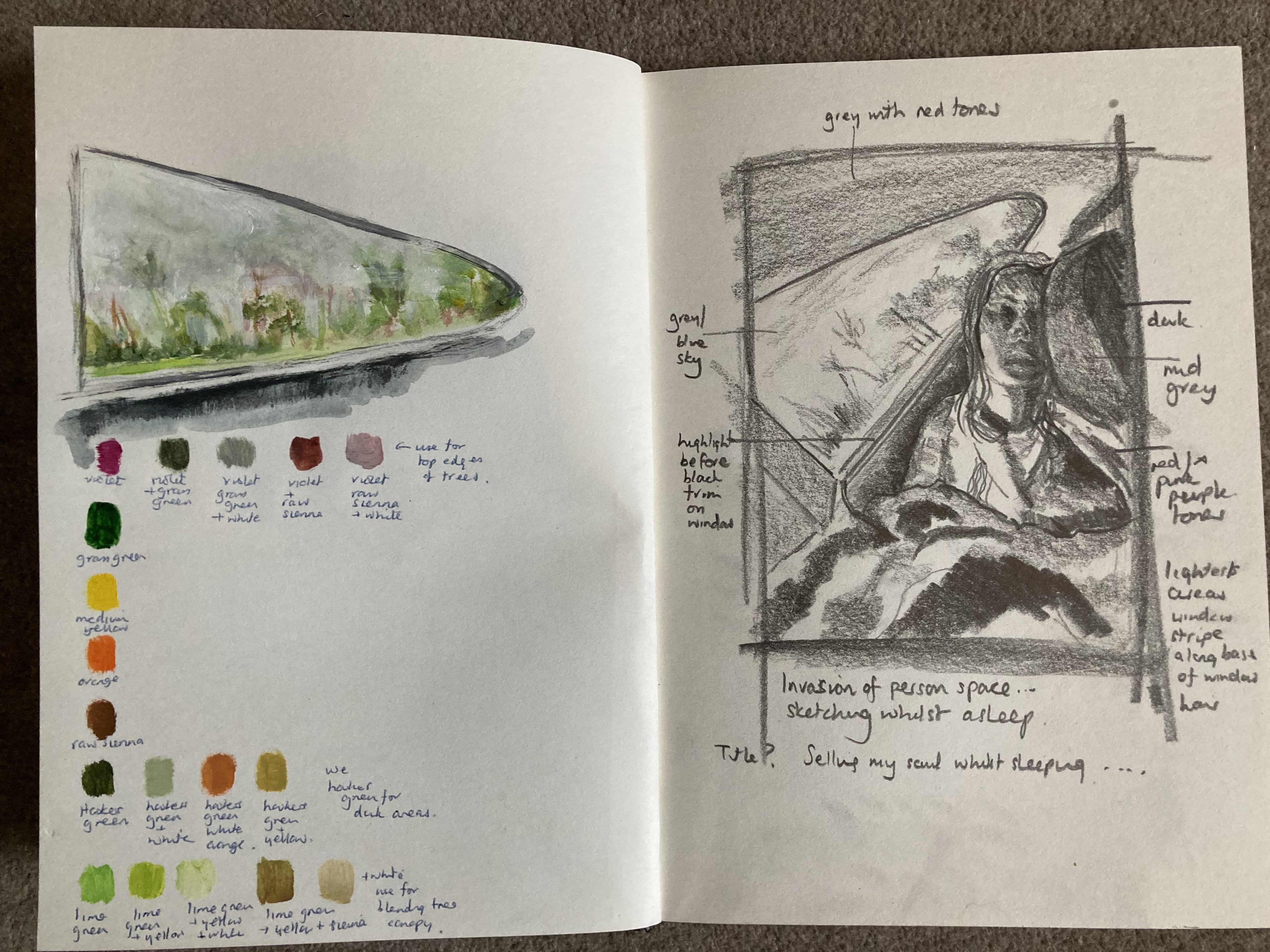
Secondly, a hidden second picture within the second painting of my assignment 5 series where initially the viewer sees a girl through a knot in the face, but a closer look could potentially reveal a face made by the girl’s shadow – the mouth, her torso – the nose and the foliage the eyes.
Biography
Tate Online (2017) Dexter Dalwood Collective Memories: The British artist talks about his 2010 St Ives exhibition. [Interview] Available at: https://www.tate.org.uk/art/artists/dexter-dalwood-4611/dexter-dalwood-collective-memories Accessed 22.09.2020).
Dalwood, D. (2003) Sunny van Burlow (oil on canvas) Available at: https://www.saatchigallery.com/artists/dexter_dalwood_paint_artist.htm (Accessed 24/10/2020).
Dalwood, D. (2008) The Crash (oil on canvas) Available at: www.escapeintolife.com/painting/dexter-dalwood/ (Accessed 24/10/2020).
British Museum, Available at : https://www.britishmuseum.org/collection/object/P_2018-7010-3 (Accessed 24/10/2020).
Dalwood, D. (2001) White Bronco (Oil on canvas) Available at: https://gagosian.com/exhibitions/2002/dexter-dalwood-new-paintings/ (Accessed 24/10/2020).